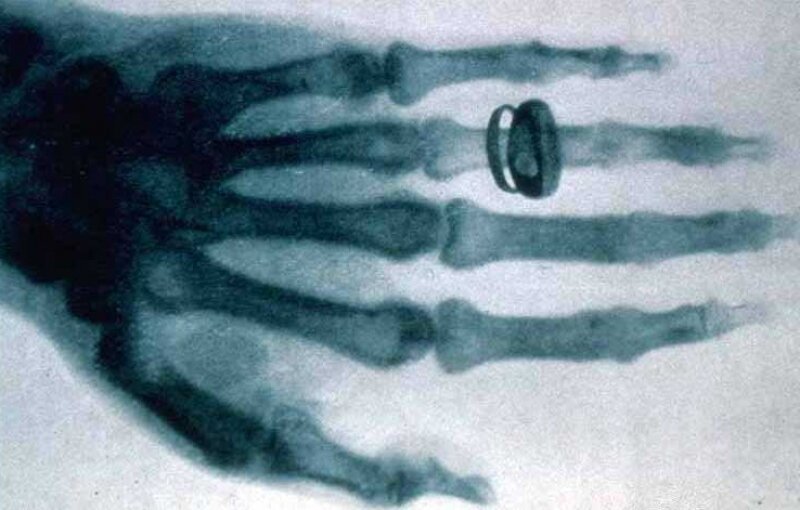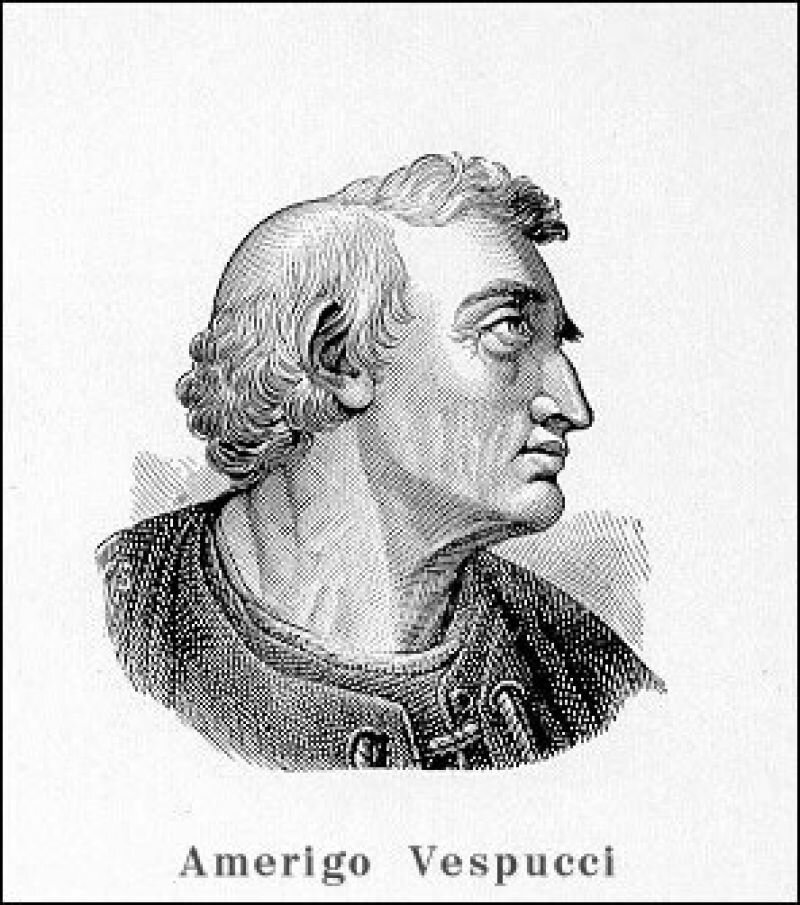
Roentgen's X-ray picture of the hand of Alfred von Kolliker, 23 january 1896
Roughly speaking, there are three ways to find something new:

1. Non-serendipity
Finding what you’re want while specifically searching for it. A good example is the discovery of the bacillus responsible for the bubonic plague. Convinced that the plague was an infection, Yersin, a student of Pasteur, travelled to South-East Asia to find the cause for the disease. He wanted to perform autopsies on people who had died in the hospital from the plague, but was not allowed to. He then commissioned a straw hut to be built on the hospital’s lawn and, with the help of a bribe, was given access to a plague victim. He sliced his knife into a pustule from which oozed a ‘puree’ of pus. Underneath the lens of his microscope he spotted the bacillus, which would later be named after him.
2. Pseudo-serendipity

Roentgen's X-ray picture of the hand of Alfred von Kolliker, 23 january 1896
Finding something you’re looking for while not actively searching for it. A classic example is the ‘vulcanising of rubber’. Goodyear mixed latex with sulphur to make it more durable: it was a ‘why-not’ sort of experiment. He heated the mixture and while stirring it spilled some on the hot oven. The spill scorched. Underneath the burnt surface was a transformed layer, underneath which an unchanged layer lay. This change is what we now call vulcanisation. Goodyear, being a man of faith, believed God himself had helped him a hand in this discovery because he had been working so hard and trying his very best.
3. Serendipity

A chance discovery, found without searching for it. As Dijksterhuis commented, it’s still unknown what aspect of cathode rays Röntgen was investigating when he discovered X-rays, or Röntgen radiation. He darkened his laboratory, covered what is now named an X-ray tube with black carton paper, electrified the tube, and saw to his great amazement a nearby fluorescent screen light up. Röntgen himself termed these rays permeating the black carton ‘X-rays’, because ‘X’ is the mathematical symbol for the unknown variable (a discovery of genius within Arabic algebra). The rays were invisible and passed straight through many materials. To convince himself of his findings, Röntgen captured the results on light-sensitive plates. When asked what he thought he had discovered he answered: ‘I wasn’t thinking, I was experimenting!’ After the publication of his discovery, it turned out other researchers had made observations that were also linked to X-rays. This is called ‘negative serendipity’: these other scientists made unexpected observations, but failed to interpret them correctly.
This is similar to the discovery of America: when Columbus landed in the New World he deemed himself to be in India, which is why he spoke of ‘Indians’. It was Amerigo Vespucci who made the right interpretation! What Röntgen experienced was ‘positive serendipity’: he not only made an unexpected observation (the fluorescent screens lighting up in the dark in the vicinity of an active Crookes-tube covered in black carton), he was also correct in his interpretation of this wondrous observation.
Ultimately, in practice, non-serendipity, pseudo-serendipity, and serendipity are not always discernable from one another.